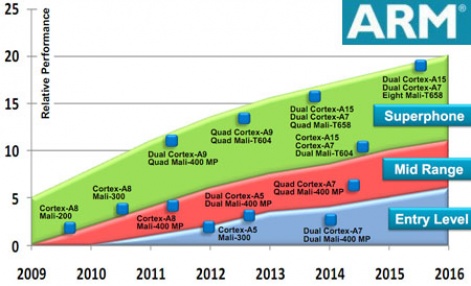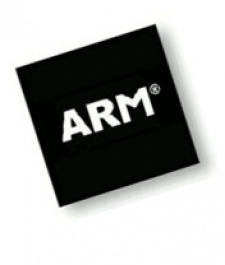Nvidia has finally, officially, announced its quad-core Tegra 3 architecture, while UK chip specialist ARM has now revealed details of its nextgen GPU design, Mali-T658.
The second design in its Midgard architecture, the T658 design is ARM's first GPU that can be deployed in an eight core configuration (also in one and four cores) for smartphones, tablets, smart TVs and set top boxes.
Double power
Each core provides double the arithmetic pipes per shader core compared to the Mali-T604, which was ARM's first Midgard design.
This means that in an eight core design, the T658 will provide four times the compute performance compared to a quad core T604, and 10 times the graphics performance of the current Mali-400 MP (which is used in Samsung's Galaxy S II).
More widely, and within caveats such as noting the difference in power, ARM reckons the T658 offers per-pixel performance that's on the same level as a PlayStation 3.
Spread the load
According to ARM's marketing director Ian Smythe, however, it's overall system performance that's key.
"Since we announced the T604, ARM has put together all the pieces in terms of chip design," he explains, pointing out its big.LITTLE CPU architecture, as well as support for 64-bit processing, cache coherence and its CoreLink component connectivity.
"Anyway, graphics performance isn't just about the GPU," he warns. "It's also about the CPU, the power design, efficient code and keeping the GPU fed."
All about integration
Of course, with ARM's CPUs used in the vast majority of smartphones and tablets - including Tegra 3 - the company's major advantage over the competition is using its CPUs and GPUs provides highly integrated chips, which potentially offer the best performance with respect to energy efficiency.
This approach also speeds the process of manufacturing chips and getting devices to market; something else that's critical in this increasingly fast moving market.
The road ahead
"We focus on scalable products, which is what our licensees need," Smythe adds. "With the T658, it doesn't matter how many cores you have. This detail is abstracted in the software, making it easy to scale performance and cost."
The result is ARM is looking forward to hardware that could be running a CPU consisting of dual Cortex-A15 and dual Cortex-A7 (that's the big.LITTLE combination) combined with an eight core Mali-T658.
We'll have to wait some time, though, as this sort of configuration is unlikely to be available in consumer hardware until mid-2015.
Indeed, the first Mali-T604 hardware won't be available until the end of 2012, with the first T658 hardware not expected until 2013.
Still, with companies such as Samsung and LG highlighted as likely licensees (both have access to Mali-T604), when that time comes, there's certain to be a lot of devices using the architecture.
You can get an idea of how ARM sees the future in the following graph, although we're asked to point out, these combinations should not be viewed as a hardware roadmap for any particular OEMs.






















